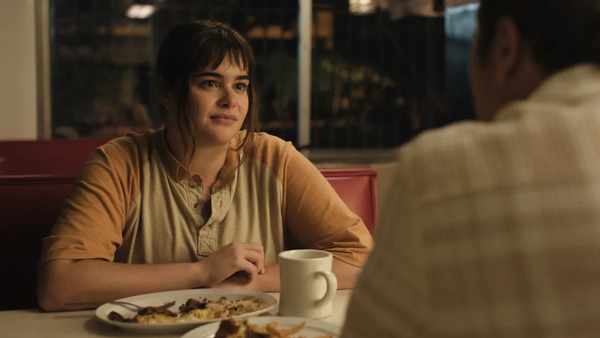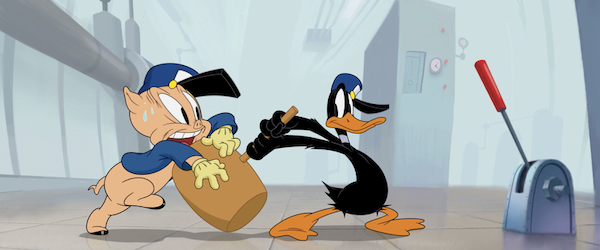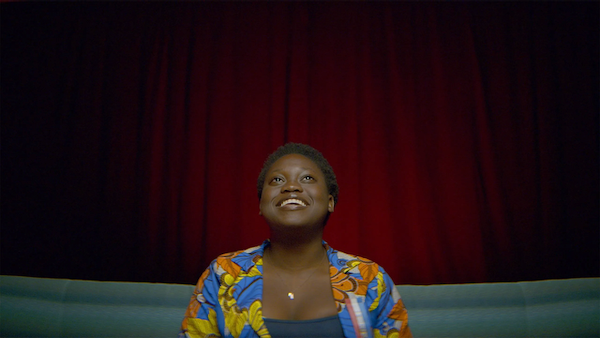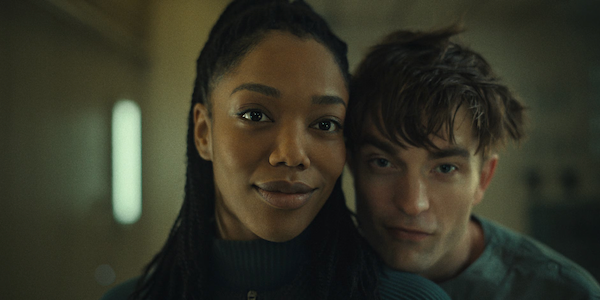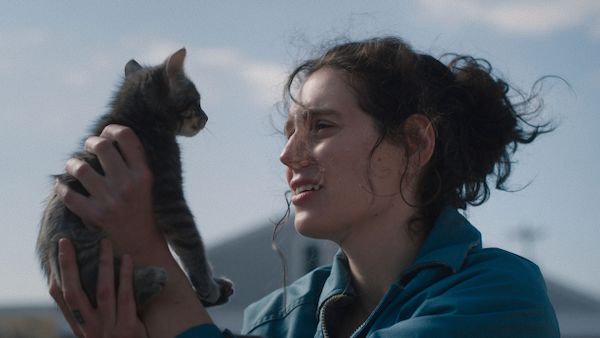Movie review by Greg Carlson
Tracie Laymon draws from her own unbelievable-but-true life experience to shape feature directorial debut “Bob Trevino Likes It,” a well-meaning if slight comedy-drama featuring Barbie Ferreira as a young woman whose fractured relationship with her father leads to an unexpected bond with a stranger she befriends through social media. Unfolding as a slow but steady story of two friends who depend on each other to light twin pathways toward emotional healing, Laymon’s screenplay sticks close to a one-thing-at-a-time formula that often feels akin to a stage play. Very little of the movie is communicated in terms of pure cinema. Conversation fuels this movie’s engine.
Ferreira’s Lily has been mistreated, used and disrespected by biological father Robert Trevino (French Stewart) since her birth. Or probably before she was born, since Mr. Trevino never wanted a child in the first place – as he regularly likes to remind his daughter. Laymon sketches a dynamic so unpleasant, viewers will wonder why an otherwise kind and patient woman like Lily would put up with such a manipulative, self-pitying sponge. The answer, as the filmmaker takes pains to remind us, lies with Lily’s desire to be loved by the one person incapable of expressing that emotion. Even Lily’s new therapist is reduced to tears while listening to the account of troubles.
Following the umpteenth ugly exchange with her deadbeat pop, Lily reaches out to another man also named Bob Trevino (John Leguizamo) while searching for her father online. Turns out, this Bob is absolutely everything her real dad is not. A married construction company worker, the other Bob Trevino quickly becomes the kind of caring and compassionate father figure Lily never had but has always needed. Despite the somewhat strange circumstances of their developing friendship, Lily and Bob forge a formidable bond that Bob’s wife Jeanie (Rachel Bay Jones) and Lily’s employer/friend Daphne (Lauren “Lola” Spencer) question. One would expect this new Bob is too good to be true, but Leguizamo brings him to life.
Despite years of experience directing episodic series and short films, Laymon struggles to find a consistent tone, particularly when it comes to the polar imbalance of Stewart’s cruelty versus Leguizamo’s saintliness. There are numerous examples of character-driven features that explore grief and frustration through a framework dependent on dark comedy. “Bob Trevino Likes It,” anchored by Ferreira’s earnest investment in Lily, will surely find receptive supporters who can relate to complicated parent/child relationships. Other viewers, however, will question why the new Bob’s instant attachment to Lily is without much in the way of growing pains or setbacks.
Laymon sets too many scenes across the tables of diners and opts for sweet and easy (a visit to a dog shelter to cuddle puppies is a textbook move) when tart and messy is sorely needed. The extent to which one will embrace the novelty of a platonic intergenerational friendship depends entirely on a tolerance for tears. Ferreira gets to shed the largest number of them, from quiet sniffles to ugly sobs to happy outbursts, and the actor handles everything being asked with a radiant glow that should open the door to higher profile roles.
